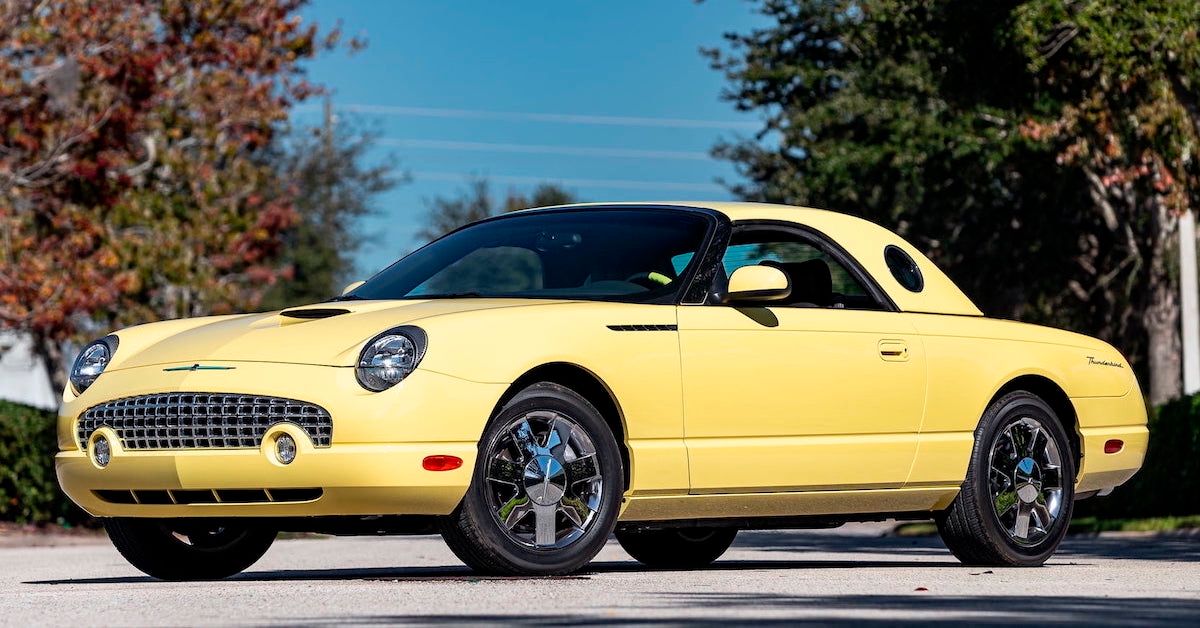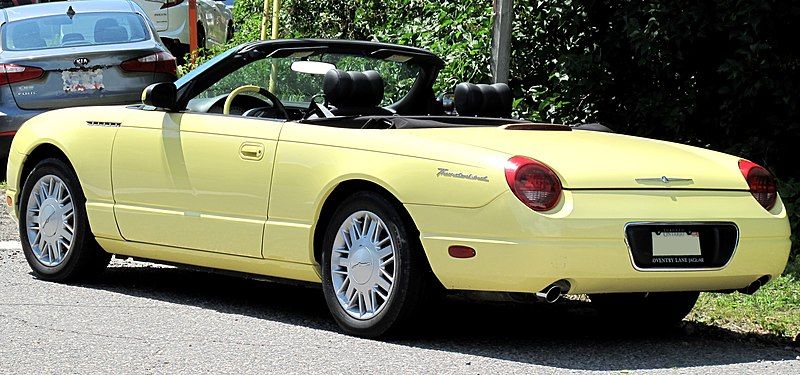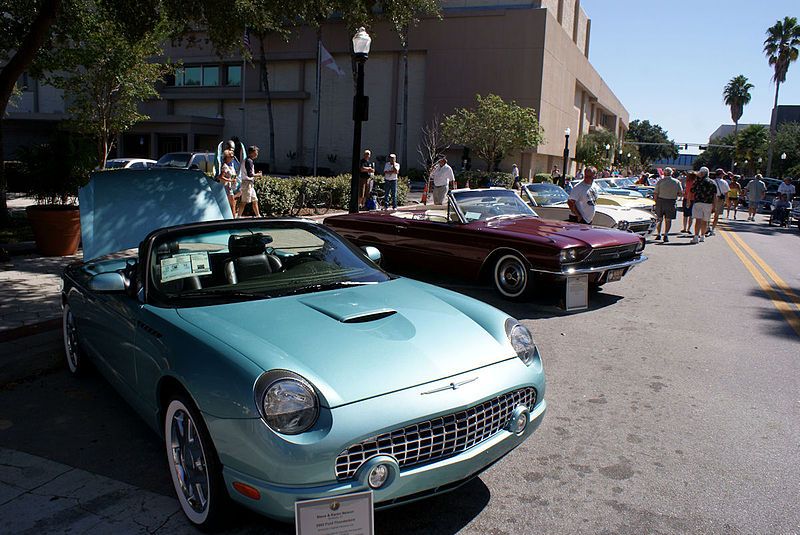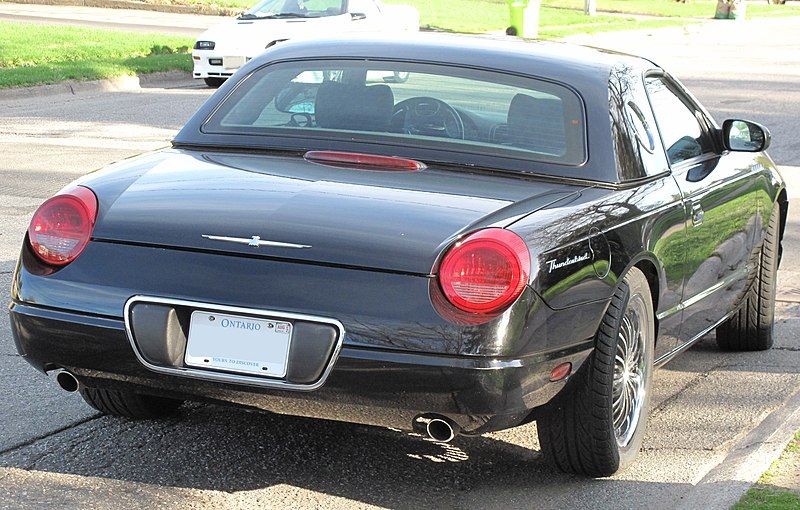The jury is still out on whether the cost outweighs the benefits of time travel, but is time travel even possible? Perhaps, it all depends on what time travel actually means. Maybe, all it takes is the courage to create a “new” by building parallel copies of the past. At least, that’s akin to what Ford attempted to achieve with the 2002 Thunderbird.
It takes courage, but courage can get misplaced. Fear is useful because it’s sometimes just another word for caution. Nonetheless, it’s a thin line between caution and cowardice, or perhaps, that’s an extreme description of the Blue Oval’s decision to revive the 1955 – ’66 T-birds using cheap materials like plastic for the interior. Who were they kidding?
Updated December 2022: As we hurtle through December 2022 and take a look at the past to see what history has taught us, we've refreshed this article to provide an updated perspective as to why a much anticipated vehicle like the 2002 Ford Thunderbird ended up being a massive disappointment.
The retro theme of the revived Thunderbird should appeal to older buyers familiar with the classic '50s two-seater, especially those with fond memories of the 1962 – '66 cigar-shaped models who should be in their retirement age right around the time Ford returned the T-bird. How Ford thought it could win this class of people over by cutting corners and introducing misconceived design quirks that seemed more like disrespect on the car beats us. Let’s see why the homecoming was such a massive disappointment.
The Life And Death Of The Ford Thunderbird
It’s not that it shouldn’t have happened. Reviving the cigar-shaped T-Bird was a poorly executed great idea. The Ford Thunderbird lasted a hoary eleven generations from 1955 until 1997 before returning in 2002 only to say goodbyes again in 2005. Ford developed the luxury model just after the Second World War during which time American soldiers saw beautiful European sports cars and the 1953 Corvette became the first sports car by an American automaker.
Introduced as a 2-seat convertible, Thunderbird eventually came in a variety of body styles, including a 4-seat hardtop coupe, 4-seat convertible, 5-seat convertible and hardtop, 4-door pillared hardtop sedan, 6-passenger hardtop coupe, and 5-passenger pillared coupe. It wouldn't be wrong to say that the sleek sports cars of Europe inspired the development of the Thunderbird. But, the bigger inspiration - so to speak, was GM's Corvette that, though enjoyed plenty of attention from the press and gearheads, was relatively underpowered.
So, Ford exploited the opportunity and introduced a more ‘thunderous’ V8-powered alternative to the Corvette. It was an immediate hit, putting away more than 14,000 units in its first year of introduction against the Chevrolet Corvette's 700 that year. Thunderbird packed an array of creature comforts to complement its performance engine, helping it to remain a formidable force in the sports car segment for many years.
The 4-seat version arrived in 1958, offering a roomier trunk and bucket seats. It was during this period that President John F. Kennedy included 50 Thunderbirds in his inaugural procession in 1961, significantly elevating the car as a cultural symbol. Three years later, the Beach Boys rock band helped turn Thunderbird into a cultural icon with the lyric, “she’ll have fun, fun, fun ’til her daddy takes the T-Bird away.” The car also snagged a major appearance in the 1973 film “American Graffiti.”
Such was the glorious life of the Ford Thunderbird until the 1990s when slowing sales rang its death toll, with Ford discontinuing the model in 1997. The automaker’s fruitless attempt to capitulate on nostalgia to revive the T-Bird in 2002 failed shamefully, despite selling out, in two hours, the entire 200 examples advertised on the Neiman Marcus Christmas catalog. Thus, the Blue Oval had no choice but to kill the Bird one last time in mid-2005.
The Eleventh Generation Ford Thunderbird In Focus
The 11th-gen Thunderbird is the revived retro-themed Thunderbird that Ford introduced in 2001 for model years 2002 through 2005. Internally designated M205, the Blue Oval hoped to evoke the spirit of the 1st-gen Thunderbird by blending a removable hardtop mimicking the 1955 model year and the cigar-shaped body style of the 1957 model.
For its mechanical components, the 2002 Ford Thunderbird relied heavily on the Lincoln LS midsize luxury 4-door sedan discontinued that year. This means Thunderbird shared Lincoln's powerplant, a 3.9-liter V8 mated to a 5-speed Ford Bordeaux 5R44E automatic transmission, and rode on the Ford DEW platform comprising a front-engine, RWD architecture.
Here’s Why The 2002 Ford Thunderbird Was A Retro Flop
Thunderbird returned in 2002 to critical acclaim and enthusiastic reception, both by enthusiasts and the mass public. Why not? This was the coolest sports car of its time, both on this side of the Atlantic and in Europe. Thunderbird may not compete with 'Stang these days, but it was already rocking the market before the Mustang showed up in 1964.
The Blue Oval must be well aware of this fact, which is why it decided to do something different with the resurrected Thunderbird, which seemed a better approach than attempting to compete with Mustang. Anyway, Motor Trend crowned the 2002 Ford Thunderbird the Car of the Year. The award was a no-brainer back then until we look back just a year earlier to remember that Motor Trend handed same award to the Chrysler PT Cruiser in 2001. It makes so much sense now, doesn't it?
Moving on, sales began dropping very fast as people realized the retro-Thunderbird was essentially a 2-door version of the Lincoln LS sedan, complete with a piss-poor interior, accompanied by an unjustifiable overblown price tag (the equivalent of $63,113 in today's money). What's so bad about the Lincoln sedan, you might wonder? Well, the target customers were nostalgic for the glorious 1950s Thunderbird and weren’t looking to buy a Lincoln with a crappy interior.
But if they must, then why the 2-seat configuration in a car with similar dimensions as the 4-door Lincoln LS and Jaguar S-Type? You could excuse it for the necessity of retro styling, but it still doesn’t make sense considering that the large body defeats the sporty capabilities of the supposed retro themes. More so, many V6s of that period delivered better power than the Thunderbird’s poorly 250 horses and even the updated 280 horsepower.
It’s a shame that the Thunderbird was neither here nor there in terms of practicality and sportiness. The subtly sloping rear is admittedly beautiful but cuts away the trunk space already pushed back by the removable soft top. The car was a massive flop because Ford decided to cut corners and go cheap on the aging clients it obviously targeted, leaving younger customers with the idea that the Thunderbird was one for the grandpas.
Fans and enthusiasts could never forgive the abundance of cheap plastic inside the car, especially the center console that looks great until you touch it and realize it's just cheap plastic. Power seats sound good, but you wouldn't expect this car to be a manually adjustable power seat that only works for the seat bottom anyway. It only had one engine option and never performed well enough in the market for Ford to at least add a turbocharger.
It does have many cool features, though, like the unlabeled keyhole on the driver's side door to lock the trunk. Furthermore, it was offered with a convertible soft-top and removable hard-top, but the latter is definitely cooler, with color matching and pothole windows mimicking the original's window design. Ultimately, the 2002 retro Thunderbird isn't an awful car, just didn't meet its potential, not by a long shot.




